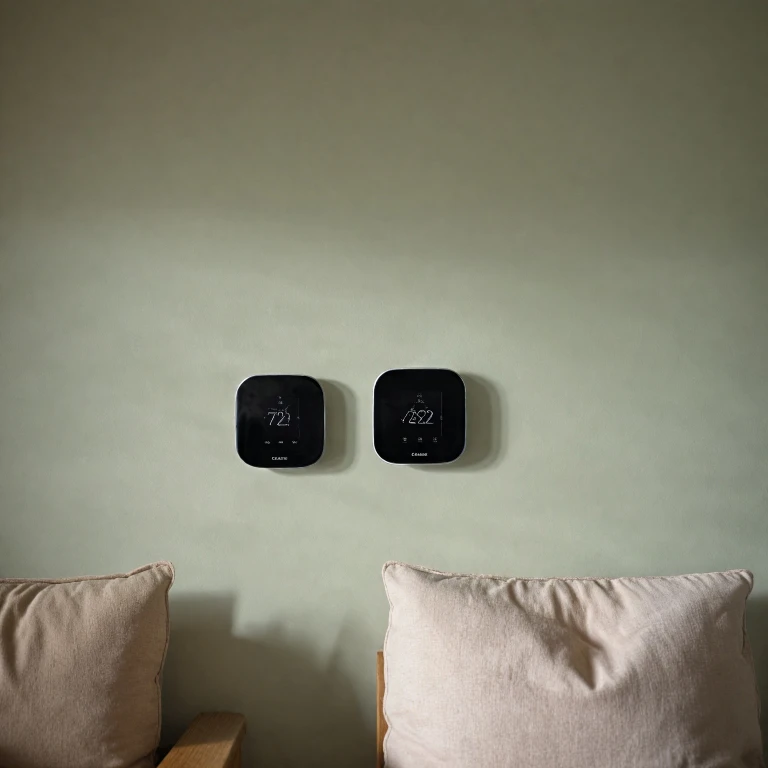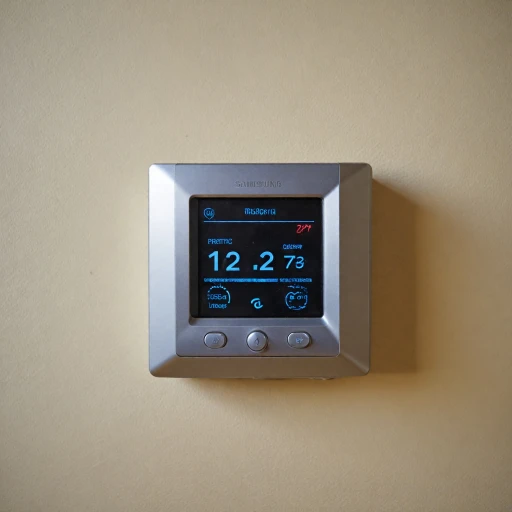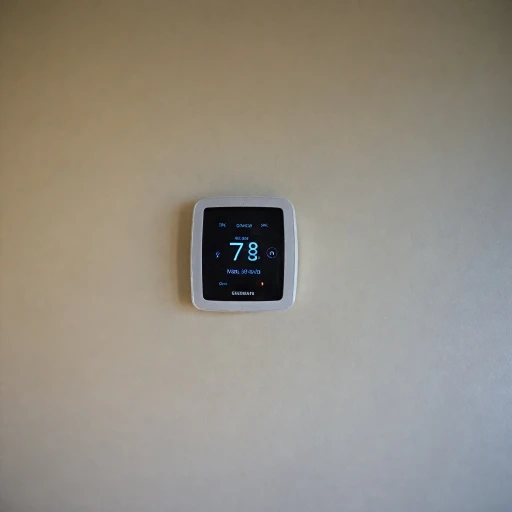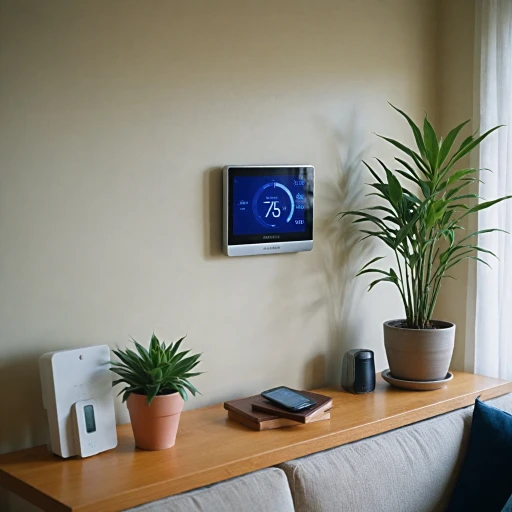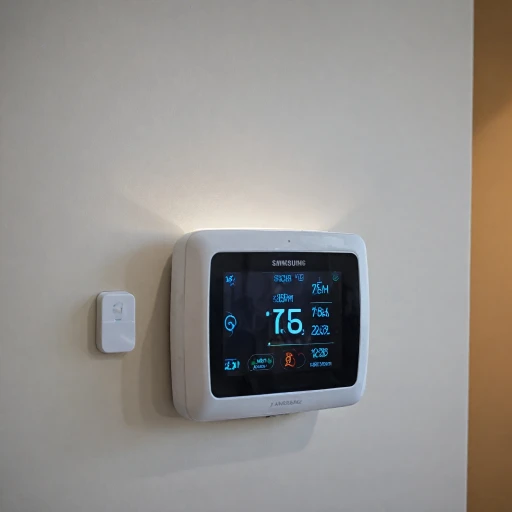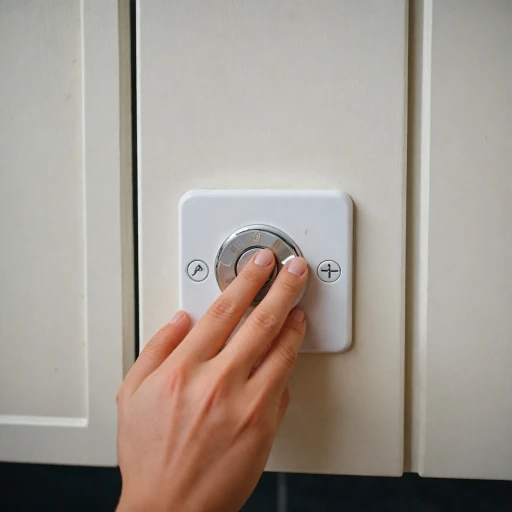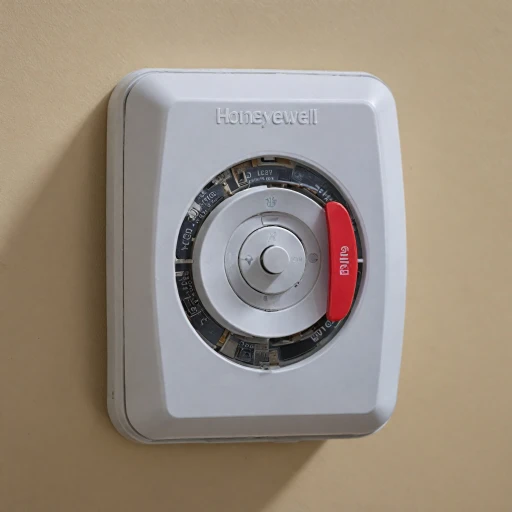
How Ecobee Thermostat Sensors Work
Delving into the Mechanics of Ecobee Thermostat Sensors
When considering smart thermostats like Ecobee, understanding their operation is crucial for maximizing their potential. The Ecobee thermostat sensors are designed to make your home more comfortable by maintaining the ideal temperature in every room. This smart system integrates the primary thermostat with Ecobee SmartSensors placed in various rooms. Ecobee sensors detect the average temperature within a room. These strategically placed smart sensors communicate with the central Ecobee thermostat, which then adjusts heating or cooling based on detected conditions. The ability of these sensors to read temperature fluctuations ensures optimal comfort and efficiency. They operate seamlessly with your Ecobee app and can be easily monitored through the app interface. Ecobee’s SmartSensors go beyond temperature detection. They offer smart security features by identifying occupancy, a key benefit when focusing on energy savings. The use of precision-based technology allows rooms with sensors to receive more tailored temperature adjustments, enhancing comfort and security without unnecessary energy consumption. Another critical aspect that highlights the technological edge of Ecobee sensors is their battery efficiency and durability. While designed to last, understanding your smart thermostat's battery life will further enhance its performance. For those keen on integrating their home environment with outdoor conditions, exploring options like outdoor temperature sensors can be beneficial. More information on this integration can be found here. In a nutshell, Ecobee's sensor technology offers households in the United States and beyond an opportunity to optimize home temperatures while ensuring peace of mind. This streamlined operation offers marked energy savings, maintaining comfort across all rooms by leveraging the full capability of these advanced thermostat sensors.Enhancing Home Comfort with Ecobee Sensors
Creating a Cozy Environment
Ecobee's smart sensors play a pivotal role in enhancing your home's comfort. These sensors provide essential data to create an environment that consistently meets your personal comfort preferences throughout the different rooms.By understanding the benefits of remote sensors in smart thermostats, you’ll see the transformative impact Ecobee offers with its SmartSensors and Ecobee sensors. Designed to read temperature and occupancy, they deliver a cohesive, balanced temperature across your home, even if particular rooms are known to be problematic.
Maintaining the Ideal Temperature
Ecobee’s SmartSensor ensures that temperature readings aren't just centered around the device itself. By distributing these smaller sensors throughout various rooms, the average temperature in a household becomes easier to manage. This approach targets specific problem areas like rooms that overheat or remain chilly, providing a customized comfort strategy.- Efficient distribution of heating/cooling efforts creates a consistently pleasant environment.
- Instant adjustments via the Ecobee app uphold comfort by modifying room-specific settings.
- SmartSensors can detect which rooms are occupied, allowing the thermostat to focus on relevant zones.
Responding to Lifestyle Changes
Your home’s dynamics shift often, such as with guests or moving from room to room. The Ecobee smart thermostat, with its intelligent sensor technology, can adapt to ensure neither energy nor comfort is compromised.- Significant lifestyle changes, such as pets coming home earlier, won't disrupt your energy efficiency.
- Voice control and app management add convenience, enabling quick adjustments for impromptu scenarios.
By merging sophisticated data analytics and a user-friendly approach, Ecobee smart thermostats enhance both comfort and security. Leveraging these abilities not only elevates peace of mind but offers a custom-tailored home environment.
Energy Efficiency and Cost Savings
Energy Efficiency: A Pillar of Ecobee's Design
Investing in Ecobee thermostats is not only about enhancing comfort in your home. It's also a commitment to energy efficiency and cost savings. The Ecobee smart systems are engineered to optimize the average temperature in your rooms, reducing unnecessary energy consumption. This makes them an excellent choice for those seeking to minimize their environmental footprint while cutting down on utility bills.
One of the keys to Ecobee's efficiency is its advanced sensor technology, which accurately reads temperature and occupancy in multiple rooms. By intelligently adjusting the heating and cooling based on real-time data captured by these sensors, the Ecobee smart thermostat ensures each room is at its optimal comfort level, thereby reducing energy waste.
- Smart Adjustments: The Ecobee app allows users to customize temperature settings remotely, providing flexibility and control. This adaptive feature is especially useful in the United States, where climate conditions vary significantly.
- Battery Life: Ecobee's smart sensors are designed with a long battery life, contributing to both the longevity of the device and consistent performance across seasons.
- Cost Efficiency: With its competitive price point and potential for energy savings, models such as the Ecobee Lite offer an accessible entry point into energy-efficient living.
In addition to energy savings, Ecobee provides features like voice control and integration with smart home systems, adding layers of convenience and smart security to your home. This holistic approach not only offers peace of mind but also ensures that your investment in a smart thermostat is both financially and environmentally rewarding.
Installation and Setup Guide
Setting Up Your Ecobee Sensors for Optimal Performance
When you invest in an Ecobee smart thermostat equipped with smart sensors, ensuring a smooth installation can enhance both comfort and energy savings. Here’s a step-by-step guide to help you set up your Ecobee thermostat sensors effectively.
- Unboxing and Gathering Essentials: Begin by unboxing the Ecobee smart thermostat package. You’ll find the main thermostat unit, including all necessary mounting hardware, and the accompanying smart sensors designed to monitor rooms for average temperature and comfort.
- Positioning Your Thermostat: Choose a central location for your thermostat, ideally away from windows and direct sunlight, to prevent any false temperature readings. The correct positioning enhances its performance as the primary control unit for your home’s heating and cooling systems.
- Placing the Smart Sensors: For optimal performance, place Ecobee sensors in rooms that experience temperature variations, such as bedrooms and living rooms. Make sure they are in an open space to accurately read the room’s temperature.
- Downloading the Ecobee App: The Ecobee app plays a crucial role in synchronizing all your devices. Download it from your device’s app store. With the app, setting up and customizing the sensors becomes straightforward, allowing personalized temperature adjustments through your smartphone.
- Connecting to Wi-Fi and Voice Controls: Use the app to connect your thermostat to Wi-Fi. Once connected, enable voice control features through integrations such as Alexa or Google Assistant, providing an easy, hands-free way to manage your home’s climate.
- Setting Preferences and Schedules: After everything is in place, configure your preferences in the app. You can define schedules that match your daily routine and adjust temperature settings for different times of the day or night.
By following these steps, you ensure that your Ecobee thermostat and its sensors work seamlessly to provide comfort and energy efficiency. For enhancing home comfort with precise readings, explore more on how Ecobee sensors benefit your smart home.
Troubleshooting Common Issues
Dealing with Common Ecobee Smart Thermostat Challenges
Addressing issues with your Ecobee smart thermostat can ensure a smooth and efficient home climate experience. Here are some typical problems you might encounter and ways to troubleshoot them effectively:- Connectivity Issues
Connection problems are often due to weak Wi-Fi signals. Check the signal strength in the room where your thermostat is installed. Moving your router closer or using a Wi-Fi extender can help stabilize the connection, enhancing your smart thermostat's performance. - Temperature Inconsistencies
If the temperature readings seem off, recalibrating your smart thermostat may be necessary. Ensure that sensors are not obstructed or influenced by external factors, such as direct sunlight or drafts. Placing the SmartSensor in optimal locations can prevent skewed average temperature readings. - App Synchronization
Issues with the Ecobee app are not uncommon. Ensure that both your smart thermostat and app have the latest updates installed to maintain compatibility and access to the newest features. - Battery Life of Sensors
If sensors are not reporting, check the battery life. Sensor batteries typically provide extended use but may need replacement depending on the frequency of use and environmental conditions. - Voice Control and Integration
If you're experiencing problems with voice control features, ensure your device settings are correctly configured. Check for updates on your smart assistant platform to maximize integration capabilities.
